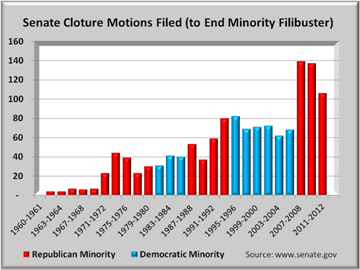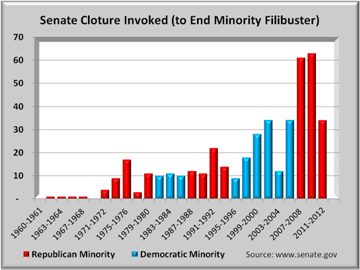Download PDF Report >>> ACA amendment
This report is superseded by a newer report found at: Exchange Fix Update
The newer report builds upon an interactive ACA Exchange simulator that tracks costs in detail across the population, then “runs” those costs through standard health claims processing. Also included are derivation of premiums and subsidies for low income Exchange members.
SUMMARY
Senator Rubio blocked funding of ACA’s “reinsurance”, a key factor in its current crisis. Just one amendment, adding reinsurance back into ACA would do far more than any other to restore ACA to affordability and sustainability.
It greatly reduces insurers’ risk, leading to billions of dollars in lower insurance costs. Those reductions would in turn reduce (also by billions of dollars) premium and co-pay support that ACA provides to the 85% of people who buy insurance on exchanges.
The net result is to shift billions of costs from people to government, in effect bypassing insurers who have been adding 15 to 20% overhead to all the dollars they now handle. The combined savings will provide the bulk of funds needed to cover reinsurance costs.
Ironically, Republicans now support high-risk pools, a less efficient form of reinsurance.
REPORT
Healthcare costs are extremely skewed with just 1% incurring some 20% of all health costs, and 5% consuming about half. To spread all insurance costs over all members results in less than enthusiastic “return on investment” for most, especially younger and healthier people. Something needs fixing but what. To begin, let us go back to the days before ACA.
Then, health insurers could reject people with pre-existing conditions. This forced millions not only to pay the costs for these conditions but also for all medical attention including ordinary care. ACA prohibiting pre-existing exclusions shifted many billions of dollars of costs to health insurers.
Second, health insurers capped the amount they would pay out in any year or over a lifetime. ACA prohibiting any limits shifted many more billions of dollars to health insurers.
With these huge shifts in costs to insurers, nearly everyone would have to participate in an insurance program in order for insurers to have any hope of financial survival. ACA recognized the need for full participation and included the “dreaded” individual mandate. Note that President Nixon proposed a healthcare reform in the 1970’s that also included an individual mandate and for exactly the same reason.
However, even with full participation, the cost shift to insurers was so great that they would have no choice but to raise premiums and deductibles. ACA also recognized this new imbalance, and added a “Risk Corridor” provision that would provide rebates to insurers who suffered extraordinary losses. The fallacy of this thinking was that after 3 years, the market would stabilize and be self-funding by insurers who had healthier enrollees and who enjoyed extraordinary gains.
In ACA’s first two full years, 2014 and 2015, reimbursable insurers’ losses exceeded $8 billion, but only several hundred million were reimbursed. Senator Rubio had slipped into a spending law a provision claiming to save taxpayers from an “insurance industry bailout.” The chaos from blocked funds was entirely predictable. ACA’s initial concerns became a self-fulfilling prophecy with insurers pulling out of areas with the highest loses and boosting premiums and deductibles in areas where they stayed. Of course, this cannot be sustained.
After years of 60+ failed votes to “repeal and replace” ACA, Republicans went to work with their own plan. One of the key elements in their solution was to fund high-risk pools for people with high medical costs. In effect, by removing high cost people from the general population, costs for the remainder would drop substantially, similar to what existed prior to ACA. Their proposal effectively shifts billions from insurers to the government that would fund these high-risk pools. Ironically, this is 180̊ contradictory to Senator Rubio’s effort to save taxpayers from an “insurance industry bailout.”
However, there is a subtle difference between the ACA and Republican solutions. With segregated pools, members are either in or out, attaching a stigma to those IN the high-risk pools. It also removes medical confidentiality with regard to members. Finally, if the past is any guide, state run high-risk pools are also prone to manipulation and funding reductions.
On the other hand, ACA reinsurance will allow all members to join in the community pool, and only when an individual’s costs exceed some threshold, reinsurance kicks in and covers those excess costs. This “ceiling” is not a new concept. It is exactly what insurers did when they set annual coverage limits before ACA. Government would assume all payments above some limit. If that limit was still too high for some health insurers, existing private reinsurers could step in to reduce health insurer’s risk. Reinsurers already sell policies to self-insured companies that want to lower their risk.
Reinsurance also offers other advantages. Primary insurers cover everyone’s routine medical costs. Members deal with one insurer for all their healthcare needs. Further, reinsurance requires minimal infrastructure change to process high cost claims. Former insurer “ceilings” simply become thresholds where, instead of denying members’ excess claims, insurers simply forward them to the government for payment.
As noted above, healthcare costs are extremely skewed at the high end. Shifting huge costs from insurers to government lowers insurer’s costs to that near pre ACA. With ACA caps on insurer’s profits, insurers will have to lower premiums and deductibles by billions of dollars. Not only will reductions reflect claims cost transfer to government, but also 15%- 20% overhead that insurers now add to those billions of dollars.
Finally, when premiums and deductibles are lowered, so will premium supports and co-pay help of which some 85% of enrollees receive. With net enrollee payments unchanged, all reductions in insurers’ costs reduce enrollee support costs. Overall, net federal spending increases should be modest.
The solution? Since ACA’s Risk Corridor” has “expired”, all one needs to do is replace it with [a] “Excess of Loss Treaty Reinsurance”, [b] with permanent government financing, and [c] with thresholds adjustable for inflation. One Amendment would have a multi-billion dollar favorable impact on ACA.
Download PDF Report >>> ACA amendment
Filed under: Analyses, Health Insurers, Healthcare Reform, U.S. House, U.S. Senate | Leave a comment »



















Affordable Care Act – Table of Contents
Download PDF Report >>> Senate bill TOC
The Affordable Healthcare Act for All Americans is without a doubt, a large and complex piece of legislation at just over 2,400 pages. But how big is 2,400 pages when wide margins, lines numbered, text double spaced, large font, multiple levels of indent, and more than a few references to other documents? The sample page below (standard 8.5 inch wide paper) is indicative of the 2,400 page document. The actual content is but a small fraction of a page.
Aside from the claims of too lengthly and complex, Republicans argued that this was a Democratic bill rammed through congress. Interestingly, AHA includes more than 160 Republican amendments accepted during the month-long mark-up through just one committee (HELP), one of the longest in Congressional history.
Critics have claimed it’s a government takeover of our health system. It may be news to those critics but half of the health system is already government-run. And the great bulk of the reform bill deals with steps to improve existing government systems that has hardly drawn any attention. The following provides a quick breakdown of the law sections. The PDF report that can be viewed/downloaded shows the entire table of contents.
There are 10 “Titles” or major topics in the bill. Only the first, at 374 pages, less than one sixth of the entire bill deals with changes to how the private sector handles health care. Yet, this is the section that has garnered nearly all the criticism. The bulk of Title I deals with prohibiting abuses by the insurance industry, which, if you ask on an issue by issue basis, most people will agree with the new provisions. Nothing in the bill involves a “takeover” of private insurers.
The next three Titles [II,III,IV] deal with improving Medicare and Medicaid programs and comprise 852 pages, one-third of the bill. These Titles address reduction of waste, fraud and abuse, and pilot new payment methods towards a “results” oriented method common in most other industrialized countries. There are few objections to this section.
Title V, at 256 pages, addresses anticipated shortages of primary physicians and other healthcare workers due to services that will be required by aging baby boomers. This is totally opposite the “death panels” that ration healthcare that unfortunately got too much press for a falsehood.
Title VI uses 323 pages to improve transparency and integrity, yet more efforts to reduce waste, fraud and abuse in both the public and private health sectors. Who objects to efforts like this?
Title VII improves Access To Innovative Medical Therapies, with focus on lowering the cost of drugs
Title VIII addresses ‘‘Community Living Assistance Services and Supports Act’’ or CLASS Act. This title The purpose of this title is to establish a national voluntary insurance program for purchasing community living assistance services and supports. Moving people from higher cost hospitals and nursing homes to assisted living lowers costs, a laudable goal.
Title IX includes the revenue provisions that include provisions to raise revenue to pay for the expanded coverage.
The final Title X addresses 1) Medicaid and CHIP, 2) Support for pregnant and parenting women, and the major section 3) Indian health care improvements. None are controversial issues.
Title I——-Quality, Affordable Health Care For All Americans [374 pages – 14%]
Title II——Role Of Public Programs [221 pages – 8%]
Title III–—Improving The Quality And Efficiency Of Health Care [501 pages – 19%]
Title IV–—Prevention Of Chronic Disease And Improving Public Health [130 pages – 5%]
Title V——Health Care Workforce [256 pages – 9%]
Title VI–—Transparency And Program Integrity [323 pages – 12%]
Title VII-—Improving Access To Innovative Medical Therapies [65 pages – 2%]
Title VIII—Class Act [53 pages – 2%]
Title IX—–Revenue Provisions [93 pages – 3%]
Title X——Strengthening Quality, Affordable Health Care For All Americans [373 pages – 14%]
.
Download PDF Report >>> Senate bill TOC
Filed under: Commentary, Health Costs, Health Insurers, Health Quality, Healthcare Reform, U.S. Senate | Tagged: 10 major topics, Affordable Care Act, Healthcare bill table of contents, private insurers | 1 Comment »